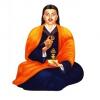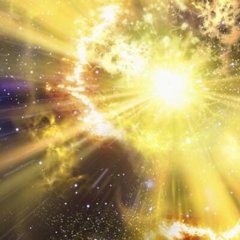-
Content count
1,461 -
Joined
-
Last visited
-
Days Won
11
About forestofemptiness
- Currently Viewing Topic: Dzogchen vs Mahamudra
-
Rank
Rambling
Recent Profile Visitors
10,695 profile views
-

LDT meditation without a teacher
forestofemptiness replied to Chang dao ling's topic in Daoist Discussion
One might argue: Isn't it about saving all sentient beings, not a personal, transactional relationship? How could someone who possess such art have any need for goodwill? And imagine how one could destroy all the fake, seminar-selling pseudo-Daoists by exposing the actual information? And if it's truly self-secret, then what harm can come? Although, most people probably won't go for it if they have to give up wine, sex, and meat. -
There has been some work done about Dzogchen and Chan by Sam van Schaik, but he doesn't concur with the Chan influence theory. I believe he has updated this in his Tibetan Zen book, but here is an old article in which he suggests the influence may have gone the other way: https://www.academia.edu/34502820/Dzogchen_Chan_and_the_Question_of_Influence The Shaivism - Buddhist connection is summarized here by Wallis: http://www.sutrajournal.com/the-tantric-age-a-comparison-of-shaiva-and-buddhist-tantra-by-christopher-wallis It is clear that there was interplay between China and Tibet, and between Buddhism and Shaivism. What I find odd is hearing a lot of overlap between a range of Tibetan Buddhist practices (including deity yoga) and Advaita Vedanta via Swami Sarvapriyananda's oral lectures. There is also a lot of overlap with Shaivism and Shaivism provides some answers to things that aren't entirely clear in the Tibetan context. This suggests to me a common source, and if I had to speculate, I think the common source in Indian Tantra as opposed to Chinese influences. But I haven't really studied it since the practice is more important than the history. However, there are some similarities between some of these practices and Daoist practices as well, particularly as related to body/energy practices. My experience is that the "secrets" of Daoist practices tend to be close held and even when disclosed, tend to be to full time practitioners.
-
The basic difference in my experience is that in Mahamudra, step by step meditation precedes the view whereas in Dzogchen, the view is introduced and is the meditation. There are also techniques unique to each, and ideas are transmitted with different models depending on the specific school, teacher, etc. Both have been highly flavored by the monastic, Tantric Tibetan culture in my opinion. I'll have to check it out. It seems there are a lot of parallels with Vedanta and Shaivism, and Chinese Chan. I'm curious to what the Daoist influences might be.
-
Why is that? Genuinely curious.
-

What's with this Relative and Absolute Reality dichotomy? It is all very confusing...
forestofemptiness replied to dwai's topic in General Discussion
In my mind, the knowing should be direct. We do have conceptions, but these are little swirls in the pool of mind-stuff. A good concept is one that leads one toward the non-conceptual absolute. For instance, Ramana proposes one examine the I-thought or aham vritti. It is still a vritti, an object, but ii is a better object than others because it is "closer" to the absolute than other objects. Still, it is like trying to build a physical scale model of absolute space, or an ice sculpture of the ocean, or using words to describe the background screen on which they appear. Focus on the words and one may miss the lighted background. It is better to find out for oneself rather than fill the mind full of thoughts about it. However, some personal observations follow: Initially, these seem like opposing tendencies in my experience. Also initially, the more one focuses on and interacts with objects, the more the objectless background tends appear to fade and tends to be hidden in alignment with the "perceptions are mental" points. Objects become more and more pronounced, solidified, and feel more "real." However, a shift "toward" the background (or inherent nature) has the opposite effect. Now the background is clear and objects less so, thoughts tend to fade and dissolve, emotions stabilize, and objects might even drop away altogether. But this is a false duality. The presence of the words doesn't hide or impact the background, and the lighted background is needed for the words to appear. Nor does one need to eliminate or make the words go away. The words depend on the background, but the background transcends any and all words. -
How very synchronistic. I've been looking for a summation of different views on synchronicity. I have some theories as well, but am in a theory collecting mode right now. A fun one for me is one day, I went to a particular outdoor mall (Mall X) and decided to sit and watch the people drifting by. My mind drew an analogy to the inner states of mind--- this is how one might observe and relate thoughts/feelings. That night, I went to satsang type of activity. The teacher began to explain how to relax from being caught up in the mind. He said it was like going to Mall X, sitting down, and watching the people wander by. He'd never used that analogy before or since, nor had I explained what I had done.
-

What's with this Relative and Absolute Reality dichotomy? It is all very confusing...
forestofemptiness replied to dwai's topic in General Discussion
I think there is a secondary problem as well. If the ancient sages are right, the experienced relative is not material, but mental. Whether you accept this lightly, as in whatever we experience is impacted by our mental structures; or more strongly, in recognizing that everything is fundamentally a cooperative dream; the end result is the same. In modern terms, the lighter version is captured by predictive processing or the interface theory of perception and the heavier by the simulation hypothesis. If relative reality is partially or entirely related to the turnings or waves of the mind, then solidified beliefs can edit, diminish, or erase what is perceived or known. Similarly, the all creating mind can produce or focus on experiences and states consistent with what one is seeking or expecting to find--- one reason why diverse and contradictory belief systems have long survived in the world. So people who dispute or close their mind to the absolute may never know it. Or they may create an object or experience of it, and take the thief for one's own child, as the Chan masters used to say. -

Detailed Experiential Overview of Advaita
forestofemptiness replied to forestofemptiness's topic in Hindu Discussion
Overall, I found this series to be a terrific overview that answers many questions, especially the Advaitic conception of God and how that contrasts with Visistadvaita and even Samkhya. It is also interesting to see how the macrocosm is mapped onto the microcosm from a AV point of view using the pancakosha or 5 sheath model. He has some interesting quips about deity practice as well, and continues to make some daring comparisons with Tibetan Buddhism. The essential point is that Swami sets out the historical, experiential, metaphysical, and grammatical background for the Brahman = Atman equation. In order to do that, he needs to explain first off what we are, what Brahman is, and what it means to draw an equivalence. It is also fairly brief for a Swami S series (although 10-11 hours is probably not brief for most). -

Is 'just sitting' a post-enlightment practice?
forestofemptiness replied to Vajra Fist's topic in Buddhist Discussion
I would add that I have found a lot of use on relative concentration, sleeping, and dreaming practices. They can be strong and direct methods of disidentifying with the various layers of body and mind. Of course, these states may also arise with "just sitting," but they also may not. Also, people have different hang ups. A of Zen teachers would say to avoid books, etc., but for me studying Madhyamaka was very useful in letting go of mental knots. Of course, one can always overdo anything. -

What's with this Relative and Absolute Reality dichotomy? It is all very confusing...
forestofemptiness replied to dwai's topic in General Discussion
My point was people who criticize Advaita see impermanence in the world as refuting Advaita, and people who criticize Buddhists see permanence and refuting Buddhist teaching. So Advaitins have to defend against critics observing impermanence, and Buddhists have to defend against critics who see permanence. Accordingly, one's experience is open to either or both views. -

What's with this Relative and Absolute Reality dichotomy? It is all very confusing...
forestofemptiness replied to dwai's topic in General Discussion
It is interesting that Advaitins have to contend with the idea that things are impermanent and constantly changing, whereas Buddhists have to contend with the idea that things are enduring and lasting! I suppose it depends on how one tunes the mind. The Advaitin approach is a bit self-harmonizing. Arguably, change only makes sense in the context of a changeless "background." And the changeless, objectless background is revealed by changing objects. In this sense, Maya is not only veiling, but revealing. Swami S compares it to space. There is light in space, but the light is only revealed when there an object for it to reflect off of. In fact, one cannot even discuss the relative without invoking the absolute: is, being, existence. I do think it is extremely hard to adjust from an object-oriented mind set to a non-object oriented mind set. Again, the "mind" is an object producing object. It makes sense that it would produce or focus on objects in, especially objects that are very subtle ---the sense of presence, the feeling of I AM, the sense of an observer, etc. No doubt given the mind's creativity, all types of false or facsimile experiences can be created to masquerade as the truth. -

What's with this Relative and Absolute Reality dichotomy? It is all very confusing...
forestofemptiness replied to dwai's topic in General Discussion
I was listening to Nonduality by David Loy and this interesting passage from the Zhuangzi popped out: -

Is 'just sitting' a post-enlightment practice?
forestofemptiness replied to Vajra Fist's topic in Buddhist Discussion
I would say it depends on the person. For some people, the invitation to give up effort and agenda may be just the thing. For some one else, it may not work at all. Imagine you're running and trying to stop, but you forgot how. One person can say, "well, just slow down more and more and you'll eventually stop." Some one can say, "Run even faster. Trust me." At first, these instructions seem to contradict. But if you run fast enough, you'll eventually exhaust yourself and stop naturally. -
I've watched over a thousand hours (or more) of Swami Sarvapriyananda's videos. This is possibly one of the best I have come across. The whole video is great, but the core is probably from 15:00ish-45:00ish. Context: he is explaining the mahavakya Tat Tvam Asi: You are That.
-
I see, a Zen/Dzogchen/Mahamudra/Shaivite/Kriya/Yogic/Christian/Daoist/Aikido/Tai Chi 13th Bhumi Bodhisattva with 14 "masters without a physical body" who diagnoses your enlightenment based on photos for 200 euros a pop. Sure, sounds totally legit. https://openheartopenheart.blogspot.com/2016/01/full-list-of-my-teachers-and-masters.html https://www.amritamandala.com/bhumi-analysis https://www.amritamandala.com/founder-and-master
















